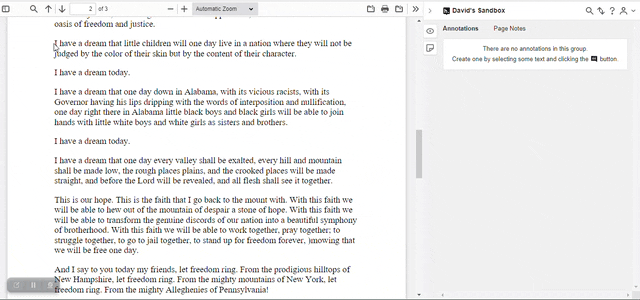Hypothes.is

Hypothes.is is another form of online course discourse that can be used to allow students to discuss a reading or topic together. Conversations take place in line with the reading or topic, providing further clarity on the context that is being highlighted. Students can share their thoughts and understanding of the reading with their classmates.

The image shows a student highlighting text inside Hypothes.is
Requirements
Hypothes.is is integrated with Brightspace. (Note: You will need an active Brightspace course shell to use Hypothes.is.)
Hypothes.is Guides
- Create a Hypothes.is activity
- Using image annotation (video tutorial)
- Grading student annotation in D2L
- Auto Grading in the Hypothesis
- Edit and re-link an existing Hypothes.is activity
- How to OCR PDFs when the original file is not accessible (text is not selectable)
Hypothes.is Resources
Support
Faculty training support
- Contact the Hypothes.is Success team at success@hypothes.is to schedule one-on-one training or ask questions related to the tool.
- Contact an ITS – Instructional Technology Specialist to schedule one-on-one training.
Faculty & Students’ technical support from Hypothesis:
- Instructors or students can open a technical support ticket with Hypothes.is using the web form, Get Help with Hypothesis – Submit a Ticket, or by emailing support@hypothes.is
updated 12/10/2025
